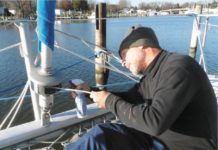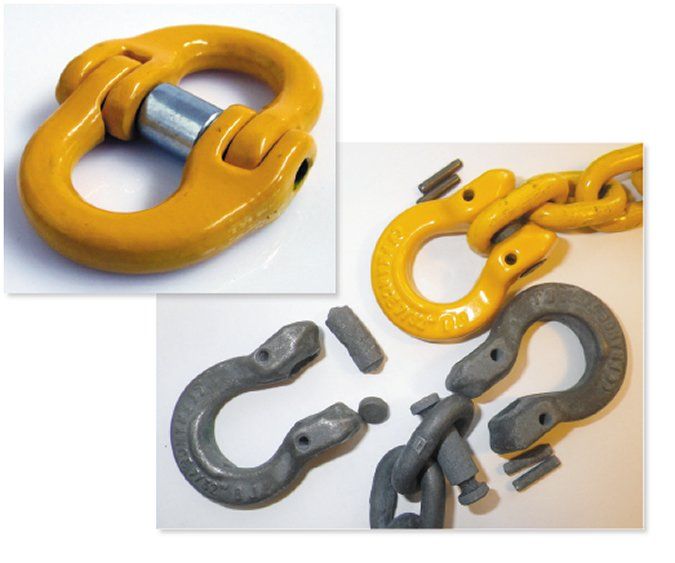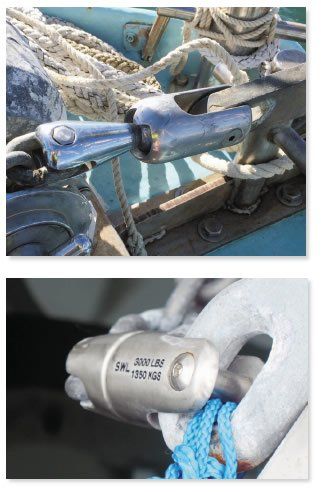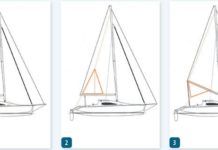Make Your Own Over-the-Boom Riding Sail
Delighted with the performance of the over-the-boom riding sail, we decided to make our own.
Rest Easy with a Riding Sail
Even when your anchor is well designed and ideally matched to your boat, there are four common factors that can cause an anchor to drag: poor bottom, short scope, insufficient shock absorption, and yawing. Each of these reduces the holding capacity of the anchor, and they are additive. That is to say that any one of them can ruin your day, solving only one or two of them does not ensure good holding, and the more problems you solve, the better youll sleep.
Mailport: anchoring etiquette, stern-tied boats, and wind generators
I really appreciated the article Anchoring in Crowded Harbors (see Practical Sailor, June 2019). The difficult and critical part is always estimating distances, and the guides you gave (two-to-three mast heights, using fractions of a nautical mile, etc.) can be difficult to do accurately in a crowded harbor with the sun setting, with some of that information available only at the helm, and multiple boats moving to anchor. As a bow hunter, I am…
Collapsible Anchor Prototype Tested
A big rollbar-style anchor on a bow roller is now synonymous with cruising. They are efficient in many types of bottoms and reliably rotate or reset when the wind and tide change. Unfortunately, they are shaped awkward and are difficult to stow anywhere other than a bow roller. Lacking this, many smaller boats, both sail and power, are forced to store the anchor in either a shallow bow locker, a snag-prone railing bracket, or in a lazarette.
Anchoring in Crowded Harbors
Stagger while you anchor? It sounds like Ive either been drinking too much or sailing too long. Bear with me.
Anchoring Legal Responsibility
We often get questions about anchoring rights. While it is commonly understood that the first boat arriving in an anchorage has privileges, many see this as a matter of etiquette, but it is also a legal issue. The below citations are from the case Juniata 124 F. 861 US Admiralty Court, E.D. Virginia, 1903. Other rulings we reviewed generally agree.]
Assessing the Anchor Kellet
One of all-chain rodes most popular features among cruising sailors has little to do with anchoring-and everything to do with stowing. With a well-designed bow roller, windlass, hawse hole, and chain locker, your rode and anchor will deploy and stow belowdecks faster and with far less effort than nylon rode requires. But for a smaller boat without a windlass or deep chain locker, an all-chain rode is often impractical. Even cruising sailors who are perfectly equipped for all-chain anchoring often find that their nylon secondary anchor better is suited for some anchoring situations.
Selecting the Right Anchor Size
Over the years Practical Sailor has conducted dozens of anchor tests, and like many publications, weve repeated the common guidance that cruising sailors should buy an anchor that is at least one size larger than what the maker recommends for your size vessel.
What Chain Connector Will Fit My Gypsy?
Regarding your recent article on joining chain segments, Ive been coastal cruising from Canada to Panama since 1983, and continuously since 2005. I have wondered about using a single 5/16-inch shackle, which will connect two lengths of 3/8-inch, G-43 chain. The Crosby top of the line 5/16-inch will go around the gypsy pretty well. I tried it, but I am reluctant to use it. Any thoughts?
Mailport: Tourniquets at Sea
Add a tourniquet to your first aid kit and know how to use correctly - it is less likely to accidentally loosen or inflict additional tissue damage.For further training, I would refer you to the American Red Cross, they have a Basic and Advanced First Aid certification, and along with the American Heart Association offer classes in cardiopulmonary resuscitation, and the use of automated external defibrillators (AEDs).


















































